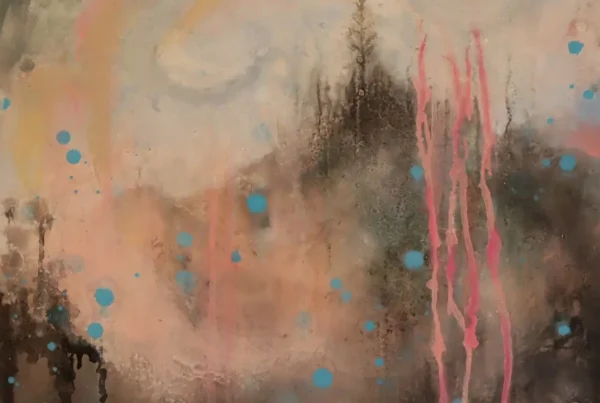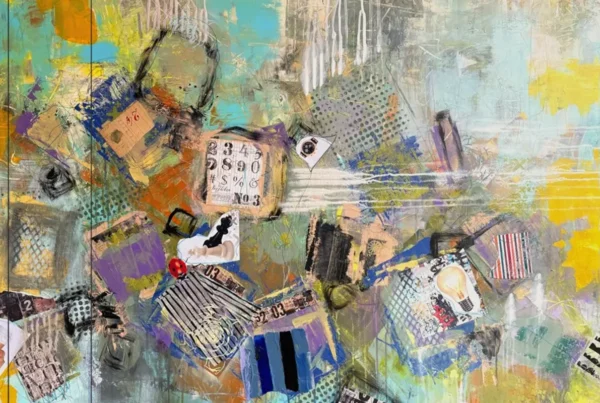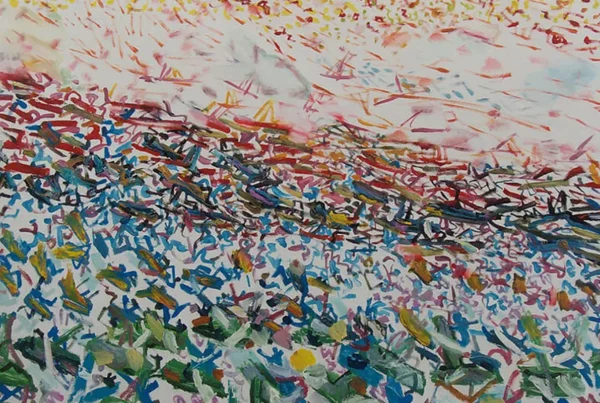“Throughout art history, it has been rare to find depictions of the female form by female artists. Instead, women are often seen and depicted through the male gaze.”
Anna Pepe: A Fusion of Heritage and Experience
Anna Pepe has deep roots that extend into the fertile soils of Tbilisi, where she has made a name for herself as a prominent contemporary artist. Despite being predominantly self-taught, her artistic journey has taken her across the borders of Italy and Belgium. It was in these nations that Pepe absorbed an array of cultural influences, further enriching her distinctive style. The essence of creativity runs in her veins. The melodies of her mother, a gifted violinist, combined with the theatrical inspirations from her father, the director of a youth theater, enveloped her early years. These influences, coupled with her roles as a photo editor, graphic designer, and art director, refined Pepe’s unique artistic identity. It wasn’t until half a decade ago that Anna made the bold decision to convert this passion into her primary livelihood, intertwining her familial legacy with her multifaceted creative experiences.

The Female Gaze: Anna’s Artistic Pillar
The crux of Anna Pepe’s work lies in her exploration of the female gaze. Driven by the urge to depict femininity from an authentically female standpoint, she strives to correct historical imbalances. In times gone by, the representation of the female form was predominantly through male eyes, a trend which the artist challenges with her evocative pieces. Pepe believes it’s high time female artists reclaimed and portrayed what is inherently theirs.
Dedicated to her craft, Anna is selective about her workspace. Her preference leans towards expansive areas, granting her canvas ample room, leading her to lease a designated studio. Recognizing that chaos can be a creativity killer, Pepe ensures her environment remains organized. Her custom table on wheels is a testament to this, holding everything from erasers to broad brushes within arm’s reach. Solitude is her preferred companion when immersed in her work, but she isn’t opposed to taking breaks when needed. In those introspective moments, Anna finds solace in the simple pleasures: a warm cup of tea, tranquil tunes, and the golden embrace of sunlight streaming in.

Anna Pepe and Influences: From Klein to Formidable Female Artists
Anna Pepe finds herself continuously inspired by an array of artists, their distinctive styles informing her own. The ethereal blue shades of Yves Klein infuse a touch of dreaminess into her canvases, while Aleksandr Deyneka, through his robust depictions of women, holds her rapt attention. Yet, it’s the audacity of pioneering female artists that fuels Pepe’s artistic fire. Their courage in shattering established norms serves as a beacon, pushing her to maintain authenticity and occasionally defy traditional boundaries. Beyond individual artists, specific artworks also strike a chord with Anna. Kazimir Malevich’s “Black Square” stands out in her mind. A piece that was way ahead of its time, it heralded a bold departure from the nature-centric themes prevalent in the early 20th century. While inherently abstract, its deeper significance lies in challenging the status quo—a sentiment that Pepe finds as pertinent today as it was over a century ago.

Evolving Mediums and a Glimpse into the Future
Over the years, the artist’s preferred mediums have witnessed a transformation. Anna fondly recalls her teenage dalliance with oil paints, an affair that has since given way to her current preference for acrylics. Especially for large canvases, the uniformity and swiftness of acrylics resonate with Pepe’s artistic pace. When working on paper, Anna dives into a world of diverse materials—Indian ink, oil pastel, gouache, and charcoal, to name a few. Each brings a unique texture and stroke, enhancing her portrayal of the female form. Pepe’s recent fascination with ancient frescoes hints at what’s next. She envisions a project featuring emblematic female figures on elongated canvases. Far from mere representations, these figures, perhaps mirroring saints or martyrs, are set to carry profound symbolic weight.






